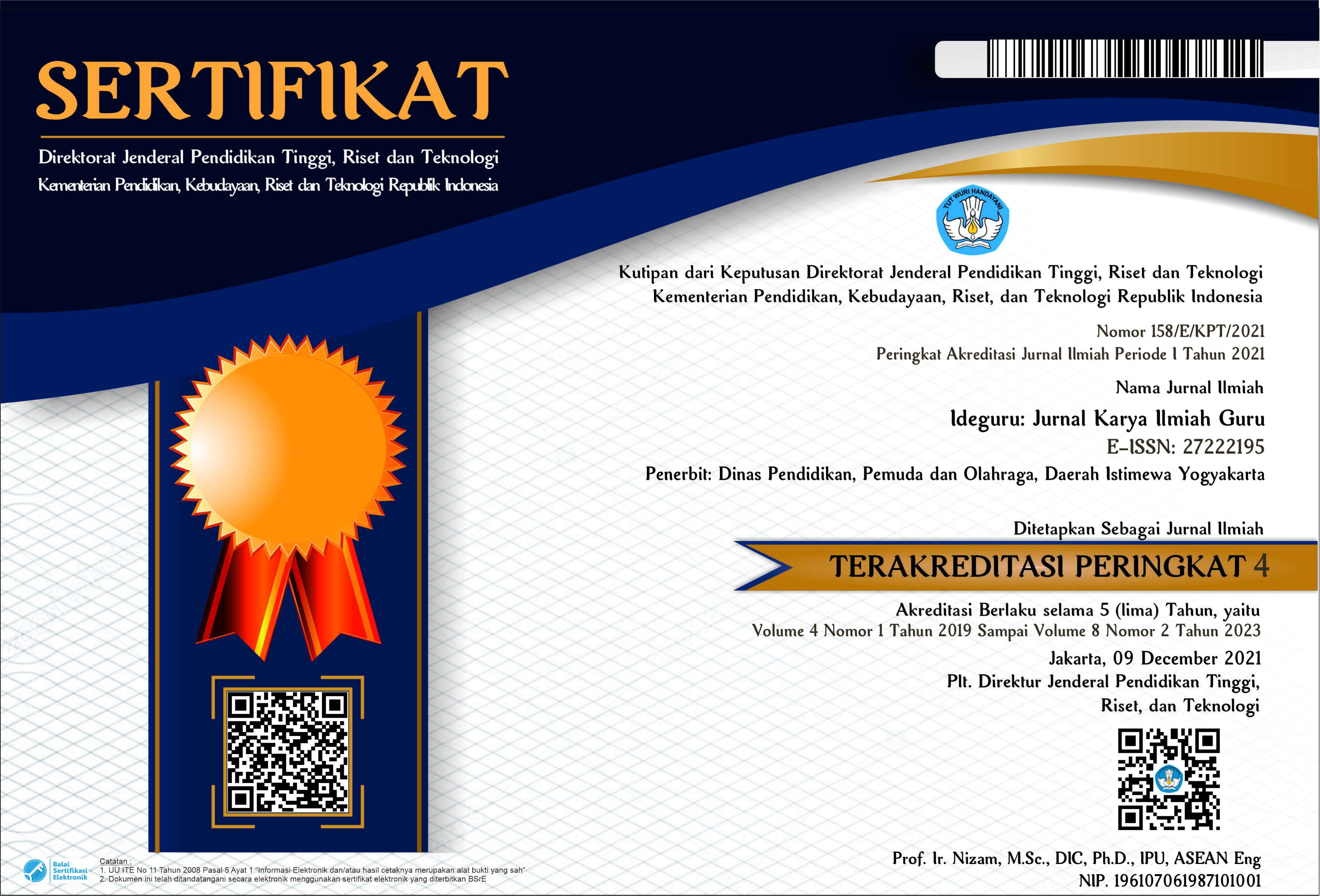Tuturan Wali Kelas dalam Berinteraksi dengan Siswa di SMAS Angkasa Maros Kajian: Linguistik Sistemik Fungsional
Abstract
This research aims to describe the homeroom teacher's speech in interacting with students at SMAS Angkasa Maros. This research is a type of qualitative research which is analyzed descriptively. The data in this research are oral speech that has been transcribed in the form of words, phrases, sentences or clauses that contain interpersonal meaning in the speech of the class teacher and class XII students at SMAS Angkasa Maros. The data sources in this research were the homeroom teacher and students of class XII IPS 2 and XII MIPA 4 at SMAS Angkasa Maros. The data collection technique in this research was carried out using recording techniques and note-taking techniques. The results of this research show that the type of MOOD that is more dominantly used in the WKP context addresses students who like to be alone in class and the WKP context addresses students whose devices are confiscated, namely the declarative indicative and the interrogative indicative. Meanwhile, the WKL context addresses students whose devices are confiscated during exams and the WKL context addresses students whose hair is shaved using the MOOD imperative type. From the results of this research new findings were found, with the theory of Functional Linguistic Systems (SLF) juxtaposed with the communication theory of Dr. Stephen R, it was found that students' openness to the homeroom teacher regarding the problems they were experiencing was carried out using two communication techniques, namely the perception check technique and the clarifying question technique. This technique is used by both homeroom teachers, both WKP and WKL, which can be seen in the speech function of questions and statements. The responses given by students predominantly use positive responses with the speech function of answer and acknowledgment. Meanwhile, the realization of speech functions in the form of non-typical MOOD choices is more common in WKP speech, while WKL shows the characteristics of typical sentences.
PDF Downloads
Copyright (c) 2024 Aas Mahari, Kembong Daeng, Ambo Dalle, Johar Amir, Usman Usman, Romansyah Sahabuddin

This work is licensed under a Creative Commons Attribution 4.0 International License.

 DOI:
DOI:














